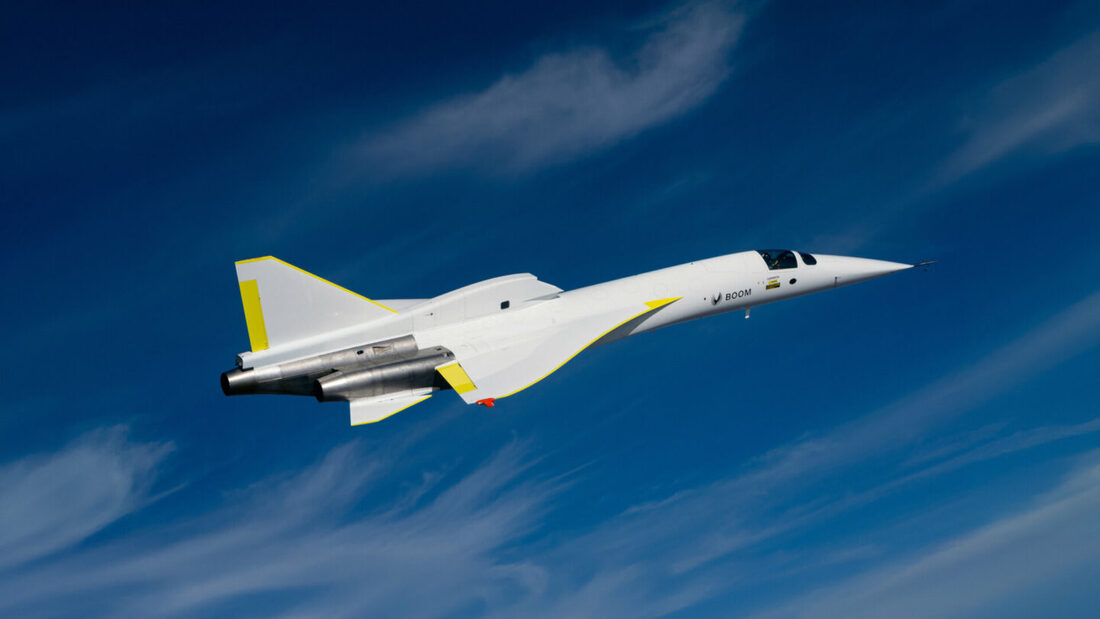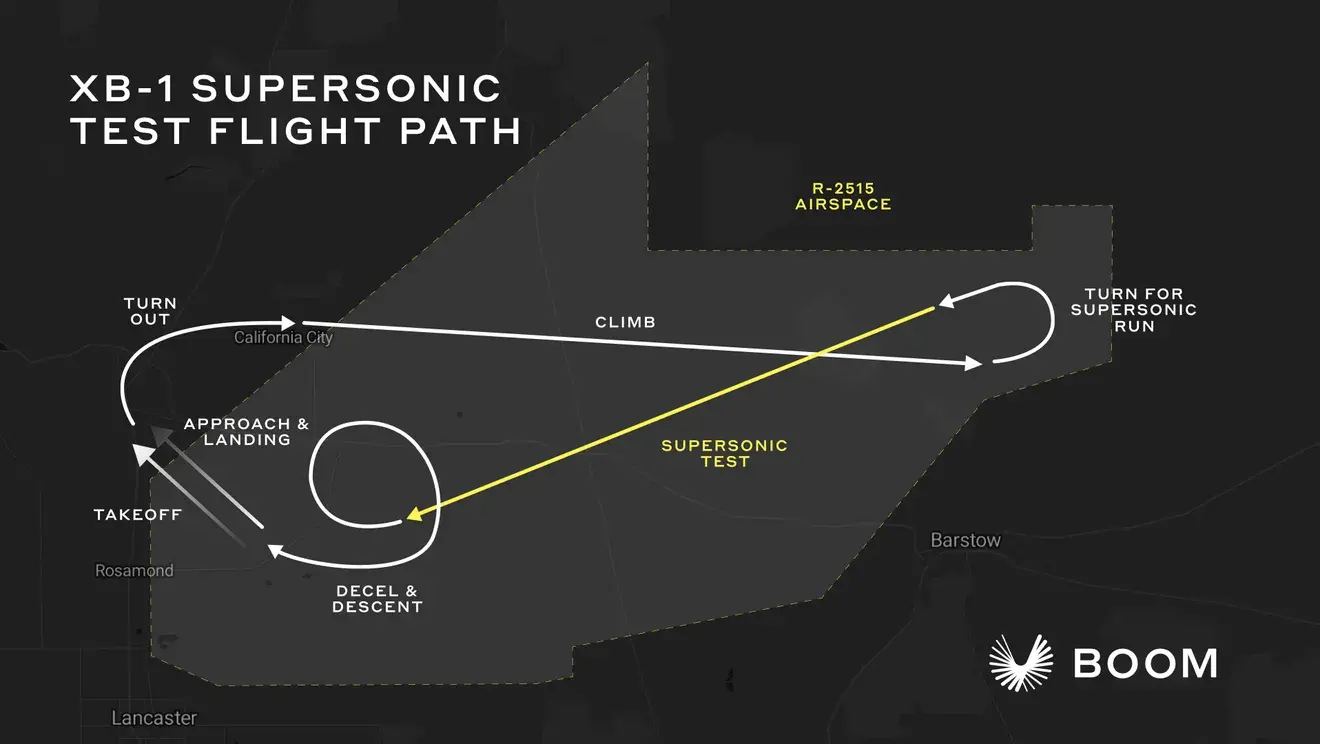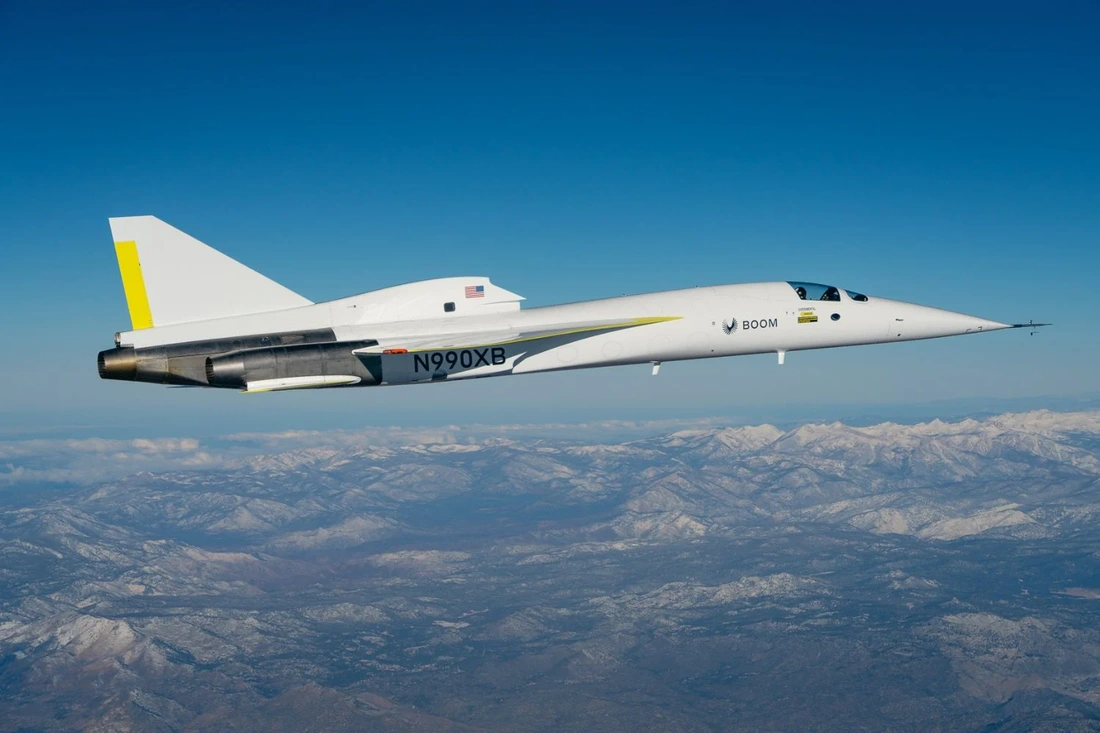|
The countdown has begun for the XB-1’s “historic” first supersonic test flight that should break the sound barrier, according to Boom Supersonic. The test flight for the Boom Supersonic XB-1, a prototype aircraft that many tout as the Concorde’s successor, will be livestreamed at 6:45 a.m. PST on Tuesday, Jan. 28, 2025, from Mojave north of Lancaster. Boom officials explained that the “world’s first independently developed supersonic jet” will break the sound barrier in the Bell X-1 Supersonic Corridor and the Black Mountain Supersonic Corridor over the Mojave Desert. Flight experts say in ideal conditions, a sonic boom can be heard up to 30 miles away from the source. It’s not clear where the sonic boom created by the X-1 will be heard, but the test flight will be just west of Barstow. Flight date and time is subject to change due to weather or safety considerations. The National Weather Service reports partially cloudy skies and no rain at launch time.
The livestream will be hosted by former Chief Concorde Pilot for British Airways Mike Bannister, XB-1 Chief Flight Test Engineer Nick Sheryka, and Boom adviser/former Chief Engineer Greg Krauland. The XB-1 team mounted a $500 Starlink Mini Antenna on a Northrop T-38 chase aircraft that will allow everyone to see the flight in real-time. “We worked with SpaceX to pair the Mini Antenna with an aviation data plan, presumably removing software speed caps,” Boom officials stated. “However, Boom officials stilled questioned if the "modest antenna" would work at high speeds and changing (altitudes)." Boom explained that the Starlink Mini was the only antenna that could fit into the T-38’s rear cockpit, allowing for an occupant of that seat, while not impeding the safe operation of the aircraft or the ejection seat. In order to make sure the Starlink Mini Antenna had no glitches, the Boom team used Sheryka’s 1995 Mazda Miata capable of greater than 100 mph. The ground test was performed at the Mojave Air and Space Port’s 2-mile-long runway in Mojave. The Starlink Mini system worked at over 100 mph, with the next successful test into the T-38 aircraft that flew up to Mach 0.9+, or near the speed of sound, while maneuvering. In 2024, XB-1 completed 10 test flights at the Mojave Air and Space Port in Mojave. XB-1 kicked off the new year with a successful Flight 11 on Jan. 10, 2025, the company stated. During the 44-minute Flight 11, Boom Chief Test Pilot Tristan “Geppetto” Brandenburg soared the XB-1 to an altitude of 29,481 feet. Once again, Flight 11 reached a transonic top speed of Mach 0.95, faster than the flight speed of today’s airliners. An aircraft flies transonic when it reaches the range of speeds just below supersonic, which is Mach 1. Flight 11’s primary objective was to expand dynamic pressure to 383 KEAS (knots equivalent airspeed) — a higher number than will be experienced during XB-1’s first supersonic flight. Flight 11’s journey was the highest dynamic pressure the aircraft ever experienced — pushing beyond the anticipated pressure the aircraft would experience at Mach 1.1. As an aircraft approaches supersonic speeds, dynamic pressure becomes a key factor — it’s essentially how hard the plane is pushing through the air, Boom explained. "Dynamic pressure and Mach number work together to shape the aircraft’s performance. During flight testing, we carefully expand one parameter at a time — either Mach number or dynamic pressure — in order to ensure safe and precise performance. The relationship between these two numbers changes with altitude — the faster and lower you are, the higher the dynamic pressure, and vice versa," according to Boom Supersonic.
0 Comments
Leave a Reply. |
Send us an email at [email protected] if you want to support this site buying the original Division of Aero Patch, only available through this website!
All
|




 RSS Feed
RSS Feed